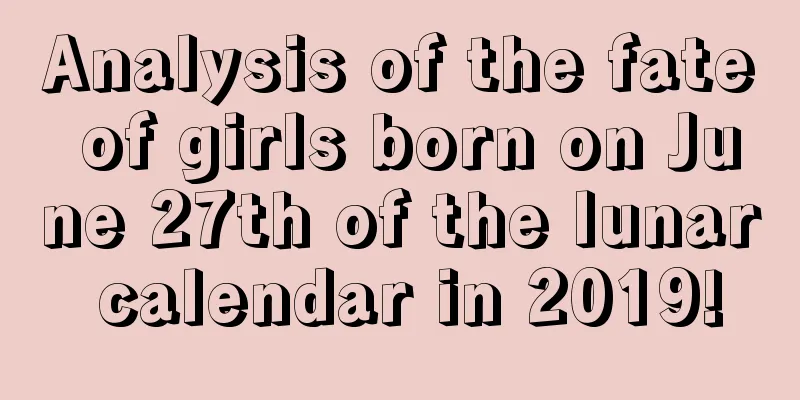How is Qingming Festival celebrated in the south? What do people eat during Qingming Festival in the south?

Introduction: China is a vast country with abundant resources. It is a multi-ethnic country, so there are differences in customs in many regions. Qingming Festival is one of the traditional festivals. So how do people in the southern region celebrate Qingming Festival? Are there any food customs? Let’s follow the editor to find out. March is the last month of spring, when all things will revive and begin a beautiful growth process. The third month of the lunar calendar is a time full of vitality because it is the most beautiful.Eat green dumplingsDuring the Qingming Festival, people in the Jiangnan area have the custom of eating green dumplings. Green dumplings are made by crushing a wild plant called "wheatgrass" and squeezing out the juice. The juice is then mixed with dried water-ground pure glutinous rice flour to make the dumplings. The filling of the dumpling is made of delicate sugar bean paste, and a small piece of sugar lard is added when wrapping the filling. After the dough is made, steam it in a steamer. When it is out of the steamer, use a brush to evenly brush the surface of the dumplings with vegetable oil. That's it. The green dumplings are as green as jade, glutinous and soft, with a refreshing fragrance. They taste sweet but not greasy, and fat but not plump. Qingtuanzi is also an essential food for people in the Jiangnan area to worship their ancestors. Because of this, Qingtuanzi is particularly important in the folk food customs in the Jiangnan area.Eat Qingming SnailsThe Qingming Festival is the best time to eat snails, as the snails have not yet reproduced during this season and are the most plump and fat. Hence, there is a saying that "Qingming snails are worth a goose." There are many ways to eat snails. They can be stir-fried with onions, ginger, soy sauce, cooking wine, and sugar. They can also be boiled and the snail meat picked out and mixed, marinated, pickled, or stir-fried. If eaten in the right way, it can truly be said that "one taste of snails brings a thousand kinds of fun, even better than delicious wine."In addition, people in various parts of my country have the custom of eating a variety of nutritious foods such as eggs, cakes, sandwiches, Qingming rice dumplings, steamed rice cakes, Qingming cakes, and dry porridge during the Qingming Festival. Eat SanziThere is a custom of eating Sanzi during the Qingming Festival in various parts of my country. "Sanzi" is a fried food that is crispy and delicious. It was called "Hanju" in ancient times. The custom of abstaining from fire and eating cold food during the Cold Food Festival is no longer popular in most parts of my country, but the Sanzi (fried dumplings) associated with this festival are still loved by people all over the world. There are differences between the Sanzi popular in the Han area in the north and the south: the Sanzi in the north is generous and unrestrained, with wheat flour as the main ingredient; the Sanzi in the south is delicate and exquisite, with rice flour as the main ingredient. In ethnic minority areas, there are many varieties of Sanzi with different flavors, especially the Sanzi of the Uyghur, Dongxiang, Naxi and Ningxia Hui ethnic groups are the most famous.Run Bing VegetablesDuring the Qingming Festival, people in Quanzhou have the custom of eating "runbingcai". It is said that this is a legacy of the ancient Cold Food Festival diet customs.The correct name of "Runbingcai" should be Chunbing. Eating runbing during Qingming Festival is not only unique to Quanzhou, but people in Xiamen also like it. According to legend, the person who pioneered this way of eating was Cai Fuyi, a native of Tongan who was the governor-general of military affairs in Yunnan, Guizhou, Huguang and Hunan during the Ming Dynasty. At that time, Tongan was under the jurisdiction of Quanzhou Prefecture, so this way of eating became popular and became a famous home delicacy in southern Fujian. However, the spring rolls in various parts of southern Fujian have the same form, but the contents are very different. Wu Nian RiceIn addition, when talking about Qingming food customs, we cannot fail to mention the She people’s "Wunen Rice", because eastern Fujian is where the She people live. On the third day of March every year, every She ethnic group household cooks "Wunen Rice" and gives it to their Han relatives and friends. Over time, the local Han people also developed the custom of eating "Wunen Rice" during the Qingming Festival. Especially in Kurong County, people must use "Wunen Rice" for sacrifice every year. It can be seen that our country has been a big family where all ethnic groups live in harmony since ancient times.Mustard RiceDuring the Qingming Festival, most people in eastern Fujian, whether in urban or rural areas, have the custom of eating mustard greens. It is said that eating "mustard rice" made by mixing mustard and rice on the second day of the second lunar month can prevent scabies all year round. There is also a custom of cooking loach noodles as a gift to ancestors and others on March 3rd. Moreover, during this period, in many cities and towns in eastern Fujian, you can also eat a kind of food with eastern Fujian characteristics. That is spring chrysanthemum and golden cherry flowers mixed with ground rice milk and baked as a seasonal snack. This snack is quite rural in flavor.Green RiceVolume 15 of Sui Shi Guang Ji by Chen Yuanliang (c. 1225-1264) quoted from Lingling Zongji which recorded another Cold Food Festival food called "Qingjing Rice": "The leaves of Yangtong and fine holly, those growing near water are especially lush. During the Cold Food Festival, the locals pick their leaves and dye rice with them. The rice is green and shiny, and eating it can replenish yang energy. It is called Yangtong Rice. Taoists call it Qingjing Rice or Shiji Rice." The custom of dyeing rice green during the Cold Food Festival and Qingming Festival seems to be more popular in the south. Lang Ying (1487-after 1566, a native of Hangzhou) mentioned the "green and white dumplings" eaten during the Cold Food Festival in Volume 43 of his "Seven Revisions of Classified Drafts". This kind of green dumpling is made by adding brome grass juice to glutinous rice and pounding it together, and the filling is mostly date paste or bean paste. Before putting the steamed reed into the pot, put new reed leaves on the bottom. After steaming, it will be lovely green in color and have the fragrance of reed leaves. It is a very popular Qingming Festival food.Zitui steamed bun"Zitui Mo", also known as Lao Mo, is similar to the helmet of ancient military generals and weighs about 250-500 grams. It is filled with eggs or red dates and has a lid on top. The top is decorated with veneer all around. Mianhua is a small dough bun in the shape of swallows, insects, snakes, rabbits or the four treasures of the study. The round "Zitui steamed bun" is specially for men. Married women eat the strip-shaped "suozi steamed bun", while unmarried girls eat "zhuaji steamed bun". The children have face patterns of swallows, snakes, rabbits, tigers, etc. "Big Tiger" is specially for boys and is also their favorite. Parents use pear tree branches or fine twine to string together various small dough flowers, hang them on the roof of the cave or next to the window frame, and let the children enjoy them slowly. The air-dried dough flowers can be preserved until the Qingming Festival of the following year.Summary: Through the above article, we learned about the customs of eating during the Qingming Festival in the southern region. I hope you like the above article, and I also hope that you will like our folk culture! |
>>: What other customs are there during Qingming Festival besides tomb sweeping?
Recommend
Where is the direction of the God of Happiness on the 14th day of the second lunar month in 2017?
Introduction: The God of Happiness is the god who ...
Is it a good fortune for people born in the Year of the Rat during the Qingming Festival? Analysis of the fate of the zodiac rat
The fate of the zodiac rat will be different depen...
Do we worship Tai Sui on the eighth day of the first lunar month? What is the name of Tai Sui in the Year of the Pig in 2019?
The traditional folk custom is to worship Tai Sui ...
Is September 2, the day before National Day in 2019, an auspicious day for funerals? Check today's auspiciousness and inauspiciousness!
Introduction: It is usually necessary to choose an...
Is it good or bad for people born in the seventh month of the lunar calendar to be a dog? Good fortune?
Introduction: In our tradition, people usually cel...
Is the beginning of winter on October 12, 2019 in the lunar calendar an auspicious day? Will it get colder in the beginning of winter?
Introduction: Different days represent different f...
Is it appropriate to break ground and repair graves on the 17th day of the first lunar month in 2020? What Feng Shui should be paid attention to when repairing graves in Yin houses?
Introduction: It is also necessary to choose an au...
What time is Cold Dew in 2019? 2019 24 Solar Terms Schedule
What time is Cold Dew in 2019? What are the dates ...
Is Laba Festival 2020 an auspicious day for beam raising? Analysis of the good and bad luck of the Laba Festival on January 2!
Introduction: You also have to choose an auspiciou...
Is October 29th of the lunar calendar in 2019 suitable for funerals? What is the hexagram for today?
Introduction: Funerals usually require an auspicio...
Auspicious days for moving house in April 2022
The fourth month of the lunar calendar is Mengxia,...
Is it good for people born in March of the lunar calendar in 2020 to be rats? What zodiac sign do they belong to?
Introduction: Children born in different months wi...
Query the auspicious and unlucky time of the 29th day of July 2017, and the auspicious and unlucky time of the 29th day of July 2017
1. What day is July 29th in the lunar calendar of...
What day is November 22, 2018? Is it the Minor Snow solar term? How is life?
Introduction: The arrival of each solar term heral...
What Feng Shui details should be taken into consideration when choosing a store location so that the business will be prosperous?
Introduction: In traditional Chinese culture, Feng...









